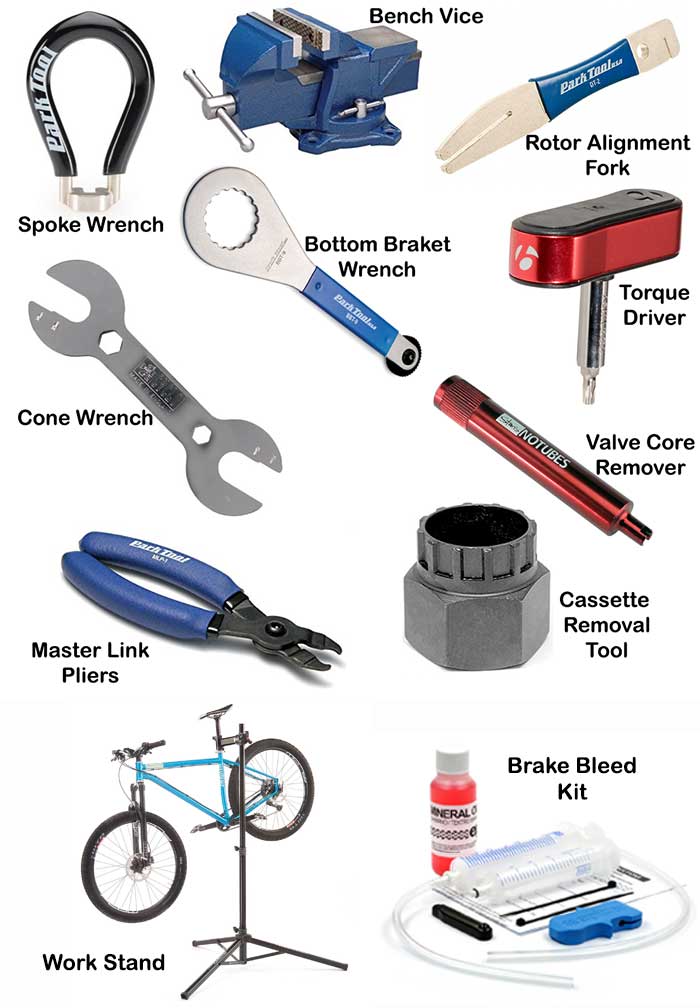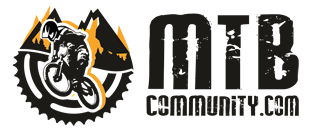Advanced Mountain Bike Tools

If you are a regular reader of our mountain bike blogs then you might have seen the article we did on what tools you should own to be able to do basic maintenance to your bike yourself. If not then you should check it out here so you make sure you at least have the basics covered before you go trying to turn yourself into a bike master mechanic!
There are so many tools these days that are bike specific and designed strictly with one purpose that it makes it easy to work on your bike yet expensive at the same time when you buy all they specialty tools. Plus some of these tools have a learning curve when it comes to using the tool itself. So assuming you already have the basic repair tools such as Allen wrenches, tire levers, a pedal wrench and so on lets now talk about some of the more advanced tools you can add to your arsenal. Keep in mind that there are more tools available than we can ever really talk about but we will go over the most common. Plus there are some that you will probably never use and are left to the professionals such as a headset press or bearing press kit.
As you can see in the image below there are a bunch of additional tools you can add to your toolbox to perform a variety of functions. Let's briefly discuss each one of these.

- Spoke wrench - Many times you will get a spoke or two that become loose and you notice that they happen to have some play in them. This is not a good thing to have because it can be a sign of pending wheel trouble or a wheel that is already in trouble or out of true. You don't want to ride with loose spokes or an untrue wheel because you risk damaging the wheel. A spoke wrench allows you to tighten a loose spoke back up to get you going again but if it's a regular problem then you should look into truing your wheel or having it done by a professional. And never overtighten a spoke if you can help it.
- Bench vice - There is nothing more frustrating than trying to use both hands to work on something while trying to hold it at the same time. This is where a bench vice comes in handy. You can use the vice to hold your part steady and be able to focus on what you are trying to do that part. Just be careful not to damage your part in the vice and use some kind of padding or a rag on the vice jaws to protect you valuable components.
- Rotor alignment fork - Everyone on has experienced that annoying rubbing brake sound while riding. Most of the time a simple caliper adjustment will take care of it but when the rotor is bent then you will need to try and straighten it. A rotor alignment fork will allow you to do this without damaging your fork like a pair of pliers might do.
- Cone wrench - These are used to work on loose bearing hubs with an adjustable cone and cup configuration. They are thinner than your standard wrenches making them easier to get in position. If you have a cartridge style hub then you won't need one of these.
- Bottom bracket wrench - Bottom bracket wrenches are used to remove and install external bearing crankset bottom brackets assuming this is the type of bottom bracket type you have. You might have a sealed cartridge type bottom bracket that would use a different kind of wrench so once again, make sure you get the right type... or just get every type!
- Torque driver - Many of the bolts on your bike will have torque specifications on them and many people tend to ignore them and over tighten or under tighten them and that can cause problems. Then again there are the pros you have done it so many times they can tighten bolts properly by feel alone. But for the rest of us a torque driver can be used to tighten bolts to the exact amount specified by the manufacturer so they don't fall off on the trail or break off on our bikes.
- Valve stem core removal tool - If you are setup with tubeless tires then you most likely have removable valve stem cores. These allow you to add sealant without having to unseat the tire and also allow you to seat the bead using an air compressor by sticking the nozzle right in the valve stem itself. Sure you can remove the cores with pliers but with a valve stem removal tool you don't have to worry about ruing the core during the process.
- Master link pliers - If you have ever broken a chain or are had to replace a chain and found it impossible to get the master link removed thanks to miles of dirt and grime then you should try a set of master link pliers. These will make the master link come of super easy and they are worth the few bucks that they will cost you.
- Cassette removal tool - This would be used for the older type cassettes that don't use the modern freehub design. There are different type for different brands of cassettes so it's not a one size fits all tool.
- Work stand - This should really be a basic requirement but it fits here as well. If you try to work on your bike without a work stand then you will find yourself knocking it over all the time or having to turn it upside down on the floor where you risk bending brake or shifter levers as well as scuffing up your seat. With a bike work stand you can clamp it down on the seat post or frame to put it in the optimal position for you to work on. Many of them have available tool trays so you can keep everything in one place.
- Brake bleed kit - If your brakes start to go soft and your pads still have enough eat on them then it probably means it's time to bleed your brakes. Certain brands have different connections and use different types of fluids so make sure you get the kit that works with your brakes.
So there you have your next list of must have tools to add to your growing toolkit. Sure you may have to get a bigger toolbox to hold all of these tools but it will totally be worth it because you will save so much money by working on your bike yourself!
Posted by Jim Bernstein


